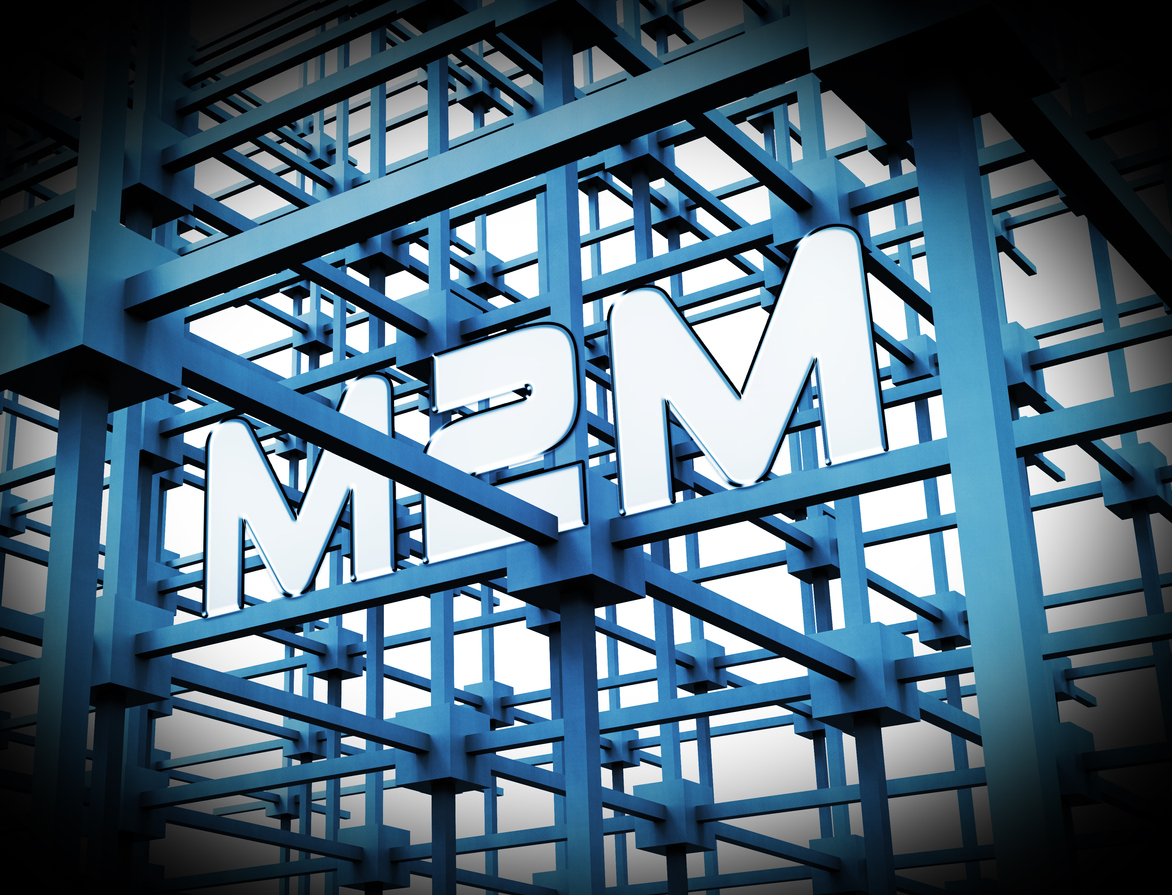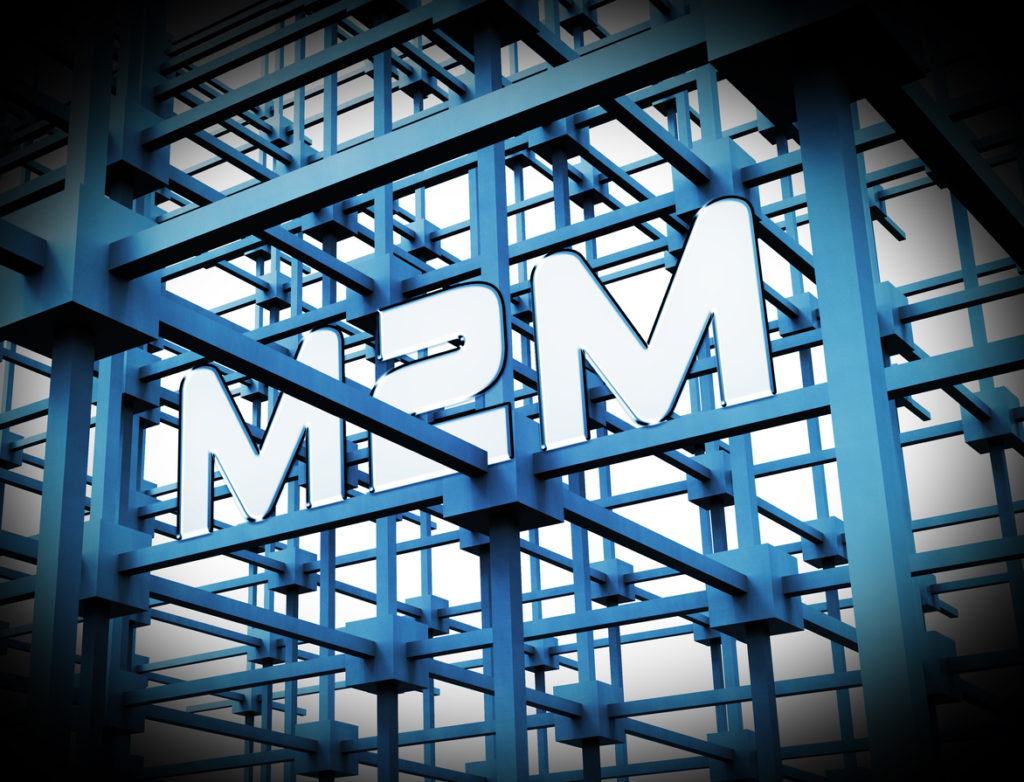Integrating M2M Across Industries—How to Do It

"*" indicates required fields

 A broad term, machine-to-machine or M2M generally refers to any technology that allows devices in a network to share information and perform actions without any human involvement. Here, we will look at the best practices for integrating M2M communications across industries.
A broad term, machine-to-machine or M2M generally refers to any technology that allows devices in a network to share information and perform actions without any human involvement. Here, we will look at the best practices for integrating M2M communications across industries.
Currently, there is limited machine-to-machine (M2M) communications in industrial environments. This needs to change and fast. Here is an analogy to understand the need for more M2M communication in the industry. Let’s say you manage a soccer team with eleven players on the team. Now, as the team manager, you’d want these eleven players to communicate with each other on the field rather than act in isolation. This is because you know that, only by communicating with each other on the field, the players can realize their ultimate goal, which is to win the game. Now, let’s reposition this analogy to an industrial setting. What you have now are machines in a factory that are not communicating. As a result, data generated by each machine in the factory stays local. The lack of communication and integration between these machines makes them less flexible to perform high-value tasks. This is a missed opportunity for manufacturers to coordinate production activity, which can lead to machines operating when not required, frequent downtimes for changeovers, and redundant processes. How do we overcome this? IoT-enabled M2M communications offer a potential solution.
According to Gartner, there will be about 25 billion devices connected with each other via the internet. Many of these devices or machines will be present in the factory. This is expected to give rise to the concept of the smart factory—a connected, intelligent, and aware environment that enhances productivity and predictability to levels never seen before. Today, we have technology that can not only capture data, but it can also deduce insights in real-time to inform and optimize processes for improved outcomes. According to a study by Mckinsey Global Institute, the biggest potential of IoT for manufacturers to create value is in the optimization of operations as this increases the efficiency of various processes within the factory. This includes using sensors and not human judgement—which is prone to errors—to adjust a machinery’s performance. Researchers at Mckinsey Global Institute also predict that IoT applications in operations optimization can potentially create value of $633 billion and $1.8 trillion per year in the factory setting in 2025. Some of this value comes from the proactive, and predictive maintenance enabled by the monitoring of machines in real-time to harness and understand data in order to optimize machine performance. By using sensors and enabling machine-to-machine (M2M) communication, you can be aware of when machine need service, which can help save on maintenance costs and prevent costly breakdowns. The benefit of sensors and machine-to-machine (M2M) communication in a factory setting is not limited to maintenance. The arrangement can also produce improved quality and production output by ensuring lower operating costs, less scrap and rework, and greater uptime and overall effectiveness of machinery.
M2M is fast gaining popularity, with the ever-increasing internet of things (IoT) already having an impact on various industries including automotive manufacturing, industrial production, and transportation. Among the first to use M2M technologies, organizations across these industries are witnessing improved efficiency, newer business models, and enhanced productivity and profitability. An immediate impact is being made by M2M in various industries. For example, by building M2M capabilities in high-value machinery such as crane, tractor, or excavator, a heavy equipment manufacturer is able to track its location and monitor its operation. Additionally, M2M capability in machines can provide the manufacturer with information to not only improve the efficiency and effectiveness of future models, but also to enable new streams of revenue. Regardless of the industry, the success of M2M deployment depends on the identification of the relevant information in context followed by its effective use. Organizations in various industries contemplating machine-to-machine (M2M) deployment need to have a holistic strategy from the very start—focusing only on current issues will limit options and thus must be avoided. With faster and more accurate identification of issues that need to be addressed, all types of organizations will be able to use M2M as a differentiator. This means that organizations need to look beyond basic GPS location functionality to equip themselves with advanced monitoring capabilities. This will ensure that organizations deal with complex changes in connectivity, integration, and global deployment. Additionally, it will require organizations to develop predictive models for maintenance that leverage the data collected by machines more effectively than the competition. The ideal M2M solution for the industrial internet of things (IIoT) is one that spans applications, platforms, and services. Additionally, it can choose, develop, integrate, implement, and manage specific machine-to-machine (M2M) technologies.
Organizations need to meet some critical pre-requisites before they can start deploying IoT-enabled M2M communications. The pre-requisites are standardization, smart connectivity, security, and short-term ROI. Standardization of IoT-enabled M2M communication is needed to ensure interoperability and a professional approach. The challenge is to make sure that as technology evolves and matures, the standards can keep pace with innovations. Organizations can only move forward with IoT-enabled M2M communication if they have standards in place that can keep pace with the changes in technology. A solution that enables plug-and-play capability for a variety of devices and machines is smart connectivity, which has two building blocks which are sensing and connectivity. Even if one of these is not present or performing up to scratch, the smart connectivity between devices and machines will not be affected. In IoT environment, there are lots of concerns around the security of devices and machines. Therefore, the security of machines in an IoT environment deserves attention. Important considerations in this regard include the legislation of data, who owns the data, and how it is shared and managed. Since ROI being high is a common expectation in industrial environments, the business case for deployment for IoT-enabled M2M communication should be proofed quickly as this will help establish clear paths for driving improvements in IoT and M2M communication. By doing the above, organizations everywhere can ensure increased M2M communication in the factor, which will become necessary in the future as IoT takes center stage.
Percento is a Professional IT Consulting, Implementation and Management firm. To find out how we can help your organization, please contact one of our friendly sales representatives for a review of your system and a comprehensive (No Obligation) proposal of services. Call today toll-free at 800.614-7886 [Austin | Dallas | Houston | League City | Sugar Land | The Woodlands | San Antonio] or email us at sales@percentotech.com.